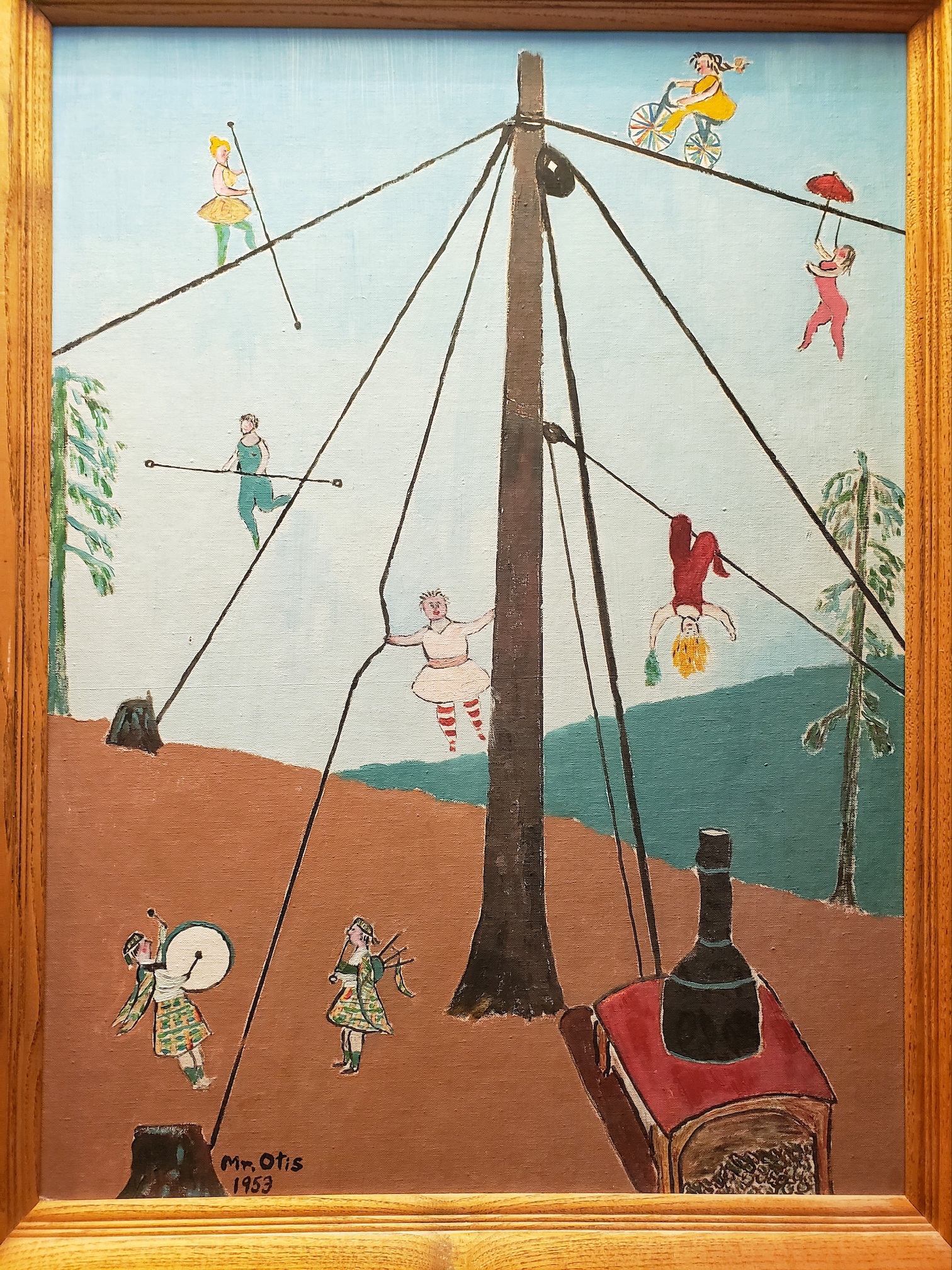by Jim Carmin (John Wilson Special Collections Librarian, Multnomah County Library, Portland, OR, jimc@multcolib.org)
When, in October, I was asked, at the last minute, to install an exhibition at the Central Library, my eyes closed and my mind raced as I wondered how I’d approach this new challenge. Then, when I opened my eyes, I saw a Mr. Otis painting sitting atop a shelf in the special collections and it all came together.
It’s not surprising that our collection represents much of what Oregon has been and is, as our library is only five years younger than the state itself. Built by the generosity of this community, past and present, our special collections holdings reflect the economic and social history, the art, the writing, and the natural history of our great state.
- “Oregon, My Oregon” from the John Wilson Special Collections
- November 13, 2021 – January 24, 2022
- 10-6 M, W-Sat., 10-5 Sun., 12-8 T
- Collins Gallery, 3rd Floor
- Central Library, Multnomah County Library
- 801 SW 10th Avenue, Portland, Oregon
On view in the new exhibition are large maps of Portland neighborhoods, including Sellwood and Mt. Tabor Heights, produced just before the turn of the 20th century to induce home buyers to move to these “most desirable” new neighborhoods. Another case features a plan of Vanport, Oregon’s second most populous city in the 1940s, built quickly to house shipyard workers during World War II. Also on exhibit are photographs of the aftermath of the terrible flood that destroyed Vanport in 1948, displacing thousands, including Black workers who were suddenly homeless in Portland; there is also the only copy of a report written to determine why the calamity occurred.
Oregon has a harsh history of treating its people of color poorly and stark evidence of that is on exhibit, including the original 1849 Oregon Territory Statute excluding Black people from moving into or living in the state. In the same case is Masks Off! Confessions of an Imperial Klansman from 1925, exposing Oregon politicians’ affinity with this terrible hate group. Oregon’s Indigenous people also suffered mightily. On display is a map showing ancestral locations of various tribes in, ironically, an 1875 publication meant to encourage white settlement in the state, as well as photographs of the Indian Training School in Forest Grove from the early 1880s showing young men and women, calling them “new recruits” despite being forcefully brought here.
There are numerous 19th-photographs of Portland including a well-known three-panel large panorama by Carleton Watkins from 1867 given to library by Matthew Deady; there are also several new acquisitions purchased (with funds from The Library Foundation) during the current pandemic, including a two-part photo from 1884 of Portland school children that shows the rare presence of three Black children; and a spectacular photo album containing almost 300 images around the turn of the 20th century, open to a two-page spread of Portland firehouses and firefighters.
A small number of Oregon’s many writers are represented here, including Ken Kesey (his seminal Oregon novel Sometimes a Great Notion; and an original drawing by former Oregonian editorial cartoonist Jack Ohman of Kesey’s obituary); Elizabeth Woody (her first book of poems and an early manuscript of a short story, with corrections); Beverly Cleary (born in McMinnville; Henry Huggins is here along with a map of his northeast Portland neighborhood); Ursula K. LeGuin (a signed broadside of a poem written for Oregon’s Calyx Journal, one of the first journals ever that celebrated women writers and artists); Edwin Markham (Oregon’s first Poet Laureate most well known for “The Man with the Hoe” from 1898); Kim Stafford (a broadside he wrote for former Governor John Kitzhaber and a poem he wrote in Spirit Land, a fine press book with beautiful color lino prints by Oregon artist Peggy Prentice of Eugene); and Barry Lopez, represented here with his provocative essay Apologia about his empathy to roadkill while driving from Oregon to Indiana, and a moving printed plan of his McKenzie River property showing where the late National Book Award winner found cougar tracks, and where he planted trees–all the more poignant now after most of this land was devastated by a wildfire in 2020, just a few months before he died on Christmas day.

Other prominent Oregonians appearing in the exhibition include the aforementioned Mr. Otis (and coincidentally, Stewart Holbrook); Laverne Krause; George Flanders; Henry W. Corbett; John Wilson; Paulann Petersen; David Sohappy, Sr.; and George Johanson. Natural Oregon is here too with unusual views of Mr. Hood glaciers; of early Oregon logging camps; and 33 reels of three-dimensional mushrooms, along with the Viewmaster device in which to see them. And of course there’s more, including our newly revised state song, “Oregon, My Oregon,” so take a look and let me know if you have any questions or comments.

Leave a Reply